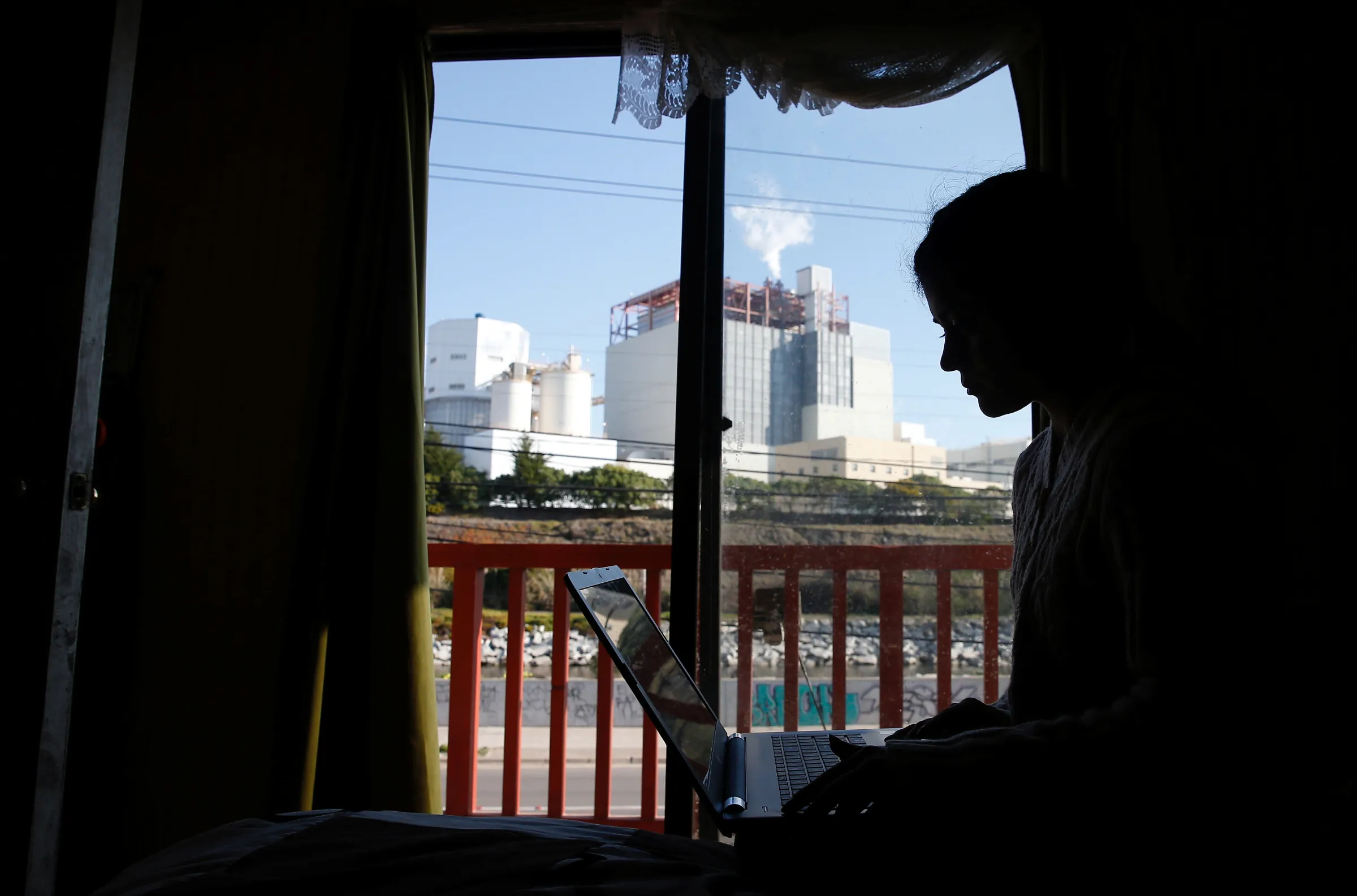How can Latin America bridge the digital divide?

A girl works on her laptop inside of her house in front of the refinery of Puerto Ventanas in Ventanas, Chile September 1, 2018. REUTERS/Rodrigo Garrido
In a highly connected world, achieving universal Internet access must be grounded in local contexts and human rights.
Laura Mantilla-León is a public policy analyst at non-profit Derechos Digitales (Digital Rights).
Fourteen years ago on June 9th 2011, the United Nations reiterated the importance of freedom of expression and the obligation of states to promote universal access to the Internet. Later in July 2016, the U.N. declared that Internet access is a crucial tool that should be guaranteed and protected by states to exercise other basic human rights.
In the context of rapid global digitalization, the Internet serves as a “key means” to allow citizens to exercise their economic, political and cultural rights, according to the U.N.
As such, countries must implement policies to guarantee effective, secure, inclusive and sustainable access to the Internet.
It is essential to recognize the structural inequalities that exist when discussing universal access to information and communication technologies (ICTs), including the Internet.
According to data from the International Telecommunication Union (ITU), nearly 70% of the world's population uses the Internet. But significant disparities to Internet access remain. While regions like Europe and the Americas reported Internet usage rates over 85%, Africa and the Asia-pacific region had low Internet use, with 37% and 66% respectively. In Latin America, 74% of the population used the Internet in 2024, yet countries like Haiti, Guatemala, Nicaragua, Honduras and Venezuela had significantly lower uptake.
The digital divide limits the ability of people to generate income, access public services and participate in civic spaces. Moreover, the digital divide in Latin America, and across the world, needs to be seen through an intersectional lens and consider class, age, gender and ethnicity. These factors exacerbate existing challenges, as historically excluded groups continue to be left out from meaningful participation in designing and implementing internet access policies. This lack of participation also results in their specific needs being frequently overlooked when developing connectivity strategies.
In Latin America, governments introduced connectivity initiatives, largely as a result of the COVID-19 pandemic, which forced rapid digitalization in critical sectors like health and education. Despite these efforts, the region is marked by profound inequalities. This results in obstacles, such as lack of electricity and Internet infrastructures, as well as high service costs and limited coverage in remote areas, to name a few. As highlighted in research by Derechos Digitales, connectivity barriers, combined with insufficient institutional and policy frameworks to ensure fair, inclusive, and sustainable access, limit the ability of urban and rural communities to exercise fundamental rights like education, health, cultural and social participation.
In recent years, the Internet has become a critical socio-political force across Latin America, allowing individuals and communities to influence public debate and organize around shared demands. For historically marginalized groups -such as women and LGBTQIA+ communities- it has expanded the exercise of rights like freedom of expression, association, and assembly. From campaigns against sexual abuse to advocacy for legal abortion and the exposure of homophobic violence, the internet has become central to social visibility and activism. This dual role - as both a political enabler and a channel for civic participation - makes meaningful, equitable access not only an issue about infrastructure, but also about inclusive democracy.
Internet access extends beyond physical connectivity. It requires a comprehensive rights-based approach. Meaningful connectivity exists not just when individuals can get online, but when they can fully understand, shape, and integrate technology into their daily lives. True access must be affordable across all socioeconomic groups and supported by laws that ensure digital security and freedom. A cornerstone of this approach is digital literacy, not merely as technical know-how, but as a critical civic skillset. It involves the ability to navigate, assess, and responsibly share information, and participate thoughtfully in public discourse. Importantly, it also involves understanding of how technology works so communities can move from passive users to active participants in shaping their digital environments.
In Latin America, this vision must include the recognition and support of community networks, not just as technical solutions for remote connectivity, but as expressions of collective organization and technological self-determination. For regions like Latin America, achieving universal Internet access requires moving beyond mere connectivity metrics.
The 20-year review of the World Summit on the Information Society (WSIS+20) is an opportunity for countries to reaffirm their commitments on inclusive and secure Internet access frameworks and policies. Any policy aimed at achieving universal Internet access must be grounded in local contexts and human rights.
Access alone is not enough, critical issues often emerge even after connectivity is established. To address these, policies must adopt multicultural and gender-sensitive approaches, strengthen data protection frameworks, and implement intersectional, rights-based governance for the Internet. Only then can universal Internet access truly support equity, inclusion, and the full exercise of digital rights.
Any views expressed in this opinion piece are those of the author and not of Context or the Thomson Reuters Foundation.
Tags
- Tech and inequality
Go Deeper
Related
Latest on Context
- 1
- 2
- 3
- 4
- 5
- 6

















